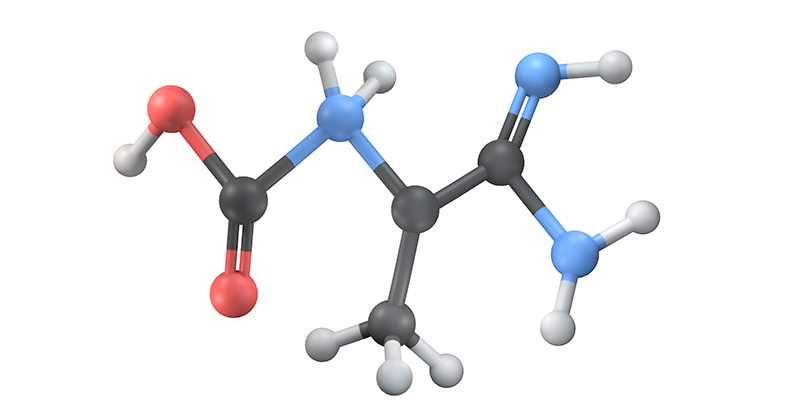Findings could lead to test to diagnose disorder’s severity

Children with creatine transporter deficiency, a hereditary developmental disorder, have higher levels of three proteins that are also found in people with Alzheimer’s disease, according to a small study by researchers at the National Institutes of Health and other institutions. The higher the level of proteins, the lower the children scored on a test of coping behaviors and skills. The findings may help inform diagnostic approaches for the disorder.
The study was conducted by Samar Rahhal, M.D., and Forbes D. Porter, M.D., Ph.D., of the Division of Translational Medicine at NIH’s Eunice Kennedy Shriver National Institute of Child Health and Human Development, along with colleagues from the National Institute of Mental health and other institutions. It appears in Molecular Genetics and Metabolism Reports.
Background
Creatine transporter deficiency, also known as X-linked creatine deficiency, is an inherited disorder affecting the brain. People with this disorder have intellectual disability, ranging from mild to severe, and speech delays. They also may develop attention deficit/hyperactivity disorder or autistic behaviors affecting communication and social interaction. Some may also experience seizures and delays in motor skill development. Creatine, an amino acid, is used by the body to store and use energy. The creatine transporter is a protein that moves creatine into cells. Creatine transporter deficiency results from variations in SLC6A8, a gene on the X chromosome.
For the current study, researchers analyzed cerebrospinal fluid from 12 males with creatine transporter deficiency, ranging from three to 14 years old. The researchers compared participants’ cerebrospinal fluid to cerebrospinal fluid from a similar group without the disorder.
Participants also were rated with the Vineland Adaptive Behavior Scale, a measure of an individual’s social competence and ability to manage the skills of everyday life. The test is used to support the diagnosis of intellectual and developmental disabilities.
Results
Compared to cerebrospinal fluid samples from participants without creatine transporter deficiency, the fluid from the 12 male participants contained high levels of tau, a protein that helps stabilize the structure of neurons. In Alzheimer’s disease, the protein clumps together to form the tangles that are characteristic of the disease. Similarly, the participants’ fluid also contained two forms of Amyloid-beta (Aβ), the protein that forms the plaques found in Alzheimer’s disease, Aβ40 and Aβ42.
For all except one of the 12 participants, the higher the level of the three proteins, the lower their scores on the Vineland Adaptive Behavior Scale.
Significance
The authors noted that the number of patients in their study is not large enough to draw statistically valid conclusions. They added, however, that because the disorder is extremely rare, their results are helpful for informing future research.
They hypothesize that the elevated levels of tau, Aβ40, and Aβ42 result from an energy deficiency in the brain caused by a lack of creatine. They added that larger studies are needed to confirm their findings and to understand how creatine deficiency may contribute to the altered levels of the three brain proteins and the progression of the disease.
Reference
Rahhal, S, et al. Elevated amyloid beta peptides and total Tau in cerebrospinal fluid in individuals with Creatine Transporter Deficiency. Molecular Genetics and Metabolism Reports. 2023. https://doi.org/10.1016/j.ymgmr.2023.101001


 BACK TO TOP
BACK TO TOP